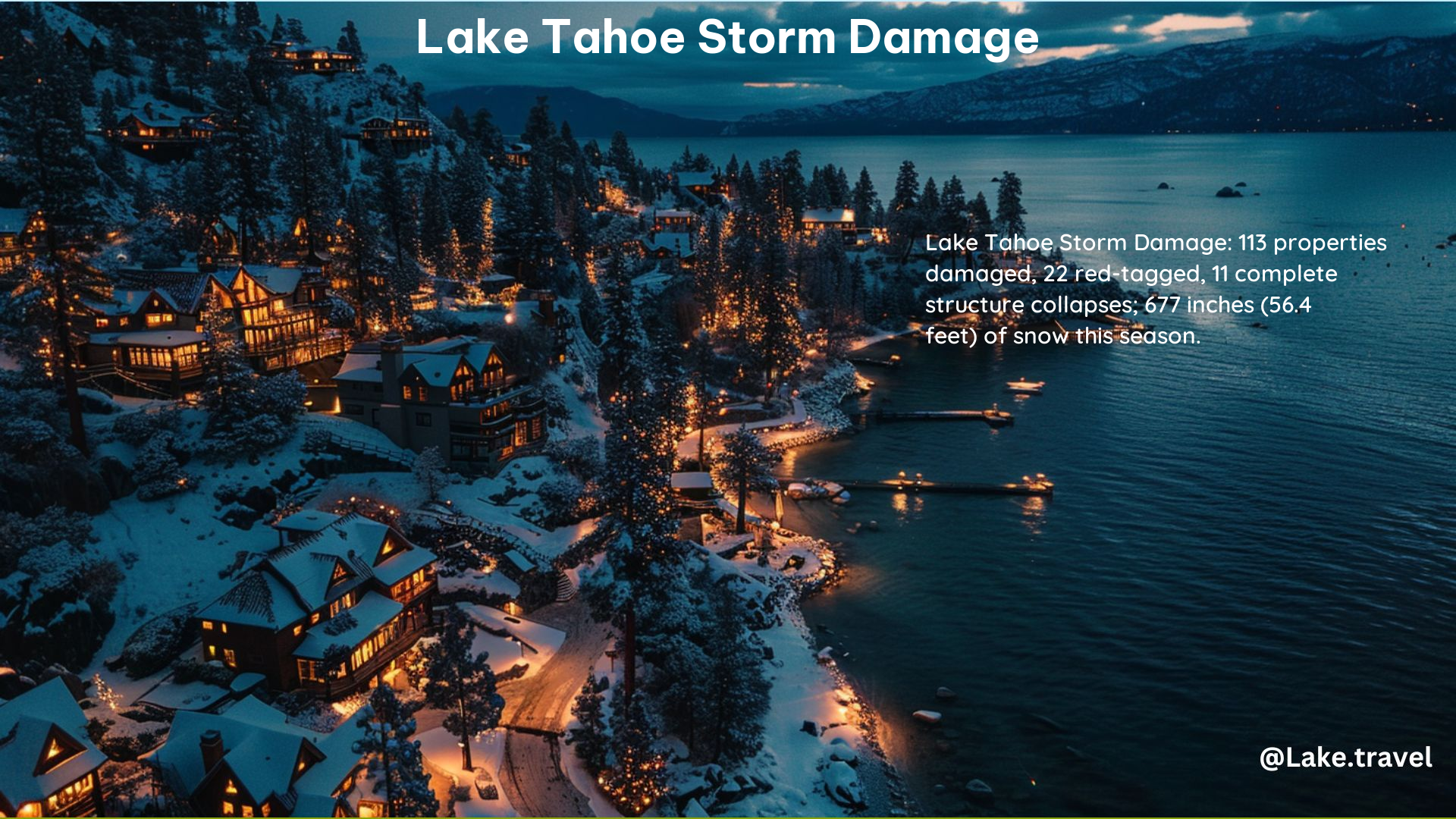Lake Tahoe, a renowned destination for outdoor enthusiasts, has faced significant storm damage in recent years, with extreme winter storms, avalanches, and flooding causing substantial harm to the region. This blog post delves into the extent of the damage, specific incidents, economic impact, weather conditions, and the response and recovery efforts.
Extent of Damage
The Lake Tahoe region has experienced several severe storms that have resulted in extensive damage to properties and infrastructure. In 2023, over 100 properties were damaged in South Lake Tahoe, with 22 of them being “red-tagged” and 11 experiencing complete structure collapses. The disastrous flooding along the Upper Truckee River in South Lake Tahoe also caused significant damage to buildings and infrastructure.
Specific Incidents

Avalanche at Palisades Tahoe
An avalanche occurred at Palisades Tahoe, a ski resort on the west side of Lake Tahoe, with rescuers working to dig out people trapped under the snow.
Raley’s Roof Collapses
Two Raley’s stores in South Lake Tahoe had to close due to roof collapses caused by the heavy snow load.
Economic Impact
The preliminary total damage and economic loss from the intense storms and record rainfall in California is estimated to be between $9 billion and $11 billion. This figure highlights the significant financial toll that these storms have had on the region.
Weather Conditions
The storms that have impacted Lake Tahoe have been characterized by extreme weather conditions, including:
- Wind Gusts: Peak wind gusts reached 53 mph in the Tahoe Basin, with higher gusts reported in other areas, such as 148 mph at Palisades Tahoe and 162 mph at Ward Mountain.
- Snowfall: Lake Tahoe reported 677 inches (56.4 feet) of snow in the 2023 winter season, a staggering amount that has contributed to the extensive damage.
Response and Recovery
In response to the severe storms, Governor Gavin Newsom declared a state of emergency for eight California counties, including Los Angeles and San Diego. This declaration has helped to mobilize resources and support for the affected communities.
Additionally, buildings deemed unsafe were “red-tagged” by the building inspector or fire marshal, prohibiting entry until repairs were completed. This measure has been crucial in ensuring the safety of residents and visitors in the affected areas.
Conclusion
The Lake Tahoe region has faced significant storm damage in recent years, with extreme winter storms, avalanches, and flooding causing substantial harm to properties and infrastructure. The economic impact of these events has been substantial, with preliminary estimates of damage and loss ranging from $9 billion to $11 billion. The response and recovery efforts, including the declaration of a state of emergency and the red-tagging of unsafe buildings, have been crucial in addressing the challenges faced by the affected communities.
As outdoor enthusiasts and lovers of Lake Tahoe, it is essential to stay informed about the ongoing storm damage and the efforts to mitigate its impact. By understanding the extent and impact of these events, we can better prepare for and respond to future storms, ensuring the continued enjoyment and preservation of this beautiful natural wonder.
References
- https://www.youtube.com/watch?v=BYHHiVJeBPE
- https://www.sacbee.com/news/weather-news/article273139525.html
- https://www.youtube.com/watch?v=gS5qC4CluiQ
- https://mynews4.com/news/local/this-winter-really-is-unprecedented-over-100-properties-damaged-in-south-lake-tahoe-winter-storm-red-tagged-atmospheric-river-south-lake-tahoe-fire-department-snow-storm-california-nevada
- https://www.accuweather.com/en/severe-weather/nearly-500-mudslides-in-california-as-deadly-storm-damage-may-reach-11-billion/1619169.
